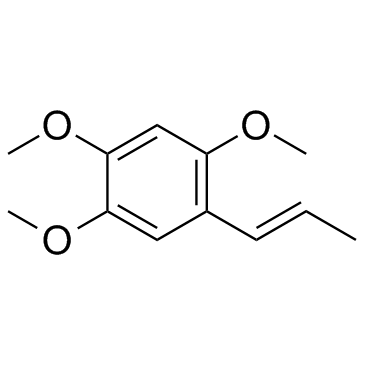Development and evaluation of α-asarone transdermal patches based on hot-melt pressure-sensitive adhesives.
Zhenwei Yu, Yi Liang, Wenquan Liang
Index: AAPS PharmSciTech 14(1) , 294-300, (2013)
Full Text: HTML
Abstract
A hot-melt, pressure-sensitive adhesive (HMPSA) based on styrene-isoprene-styrene was prepared, and its compatibility with various transdermal penetration enhancers was investigated. The effect of penetration enhancers on the adhesion properties of HMPSA was also studied. A drug-in-adhesive patch was formulated using α-asarone as a model drug, and penetration enhancers were screened by an in vitro transdermal study across excised pig skin. The pharmacokinetics in rabbits was also studied. The results show that HMPSA was miscible with most penetration enhancers (azone, menthol, isopropyl myristate, 1-methyl-pyrrolidinone, N,N-dimethylformamide, oleic acid), apart from propylene glycol. Penetration enhancers had a plasticizer-like effect that decreased the peel strength and shear strength of HMPSA. A combination of 1% oleic acid and 4% menthol had the highest in vitro penetration rate and was selected for patch preparation. The patch formulation was optimized by replacing some of the plasticizer by penetration enhancers to achieve good adhesion and effective transdermal flux. The final patch showed a high efficiency, with a relative bioavailability of 1,494%. This suggests that HMPSA may be a promising material for drug-delivery patches.
Related Compounds
| Structure | Name/CAS No. | Molecular Formula | Articles |
|---|---|---|---|
 |
alpha-Asarone
CAS:2883-98-9 |
C12H16O3 |
|
β-Asarone, an active principle of Acorus calamus rhizome, in...
2013-01-15 [Phytomedicine 20(2) , 139-42, (2013)] |
|
Cerebrovascular protection of β-asarone in Alzheimer's disea...
2012-11-21 [J. Ethnopharmacol. 144(2) , 305-12, (2012)] |
|
Simultaneous determination ofα-,β- andγ-asarone inAcorus tat...
2012-11-15 [Talanta 101 , 510-5, (2012)] |
|
Terpenoid composition and antifungal activity of three comme...
2011-12-01 [Nat. Prod. Res. 25(20) , 1993-8, (2011)] |
|
Radioprotection by α-asarone: Prevention of genotoxicity and...
2011-01-01 [Mutat. Res. 722(1) , 62-8, (2011)] |